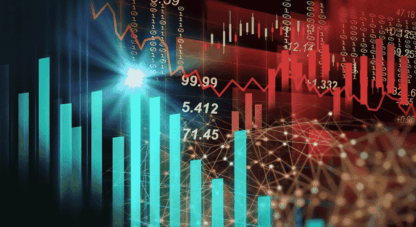Pete Rose was one of the best baseball players of his generation. He was also respected as a manager. It wasn’t till he bet on games that he became disgraced.
These facts highlight a key point: the game isn’t the same thing as the financial transactions that surround it. The latter can affect the former—sometimes greatly—but they’re not the same thing.
And though investing is not the same thing as betting (yes, investing poorly can render the two virtually identical), it is similar in this respect: an investment is a distinct and separate entity from the thing in which it is invested. A person could easily have lost money investing in Apple since its inception by repeatedly buying high and selling low. The company, however, has done all right for itself.
This is a crucial truth, but one that is essentially obliterated in any discussion of cryptocurrencies these days. Buying bitcoin as an investment is not the same thing as using bitcoin as a currency. Many people do the former, relatively few do the latter. But the better cryptocurrencies are designed to be used for important purposes, not just invested in.
Another crucial truth regarding this subject is the old element of logic that no one is taught anymore: a thing cannot be both A and not A at the same time. (And to be clear: just because it’s not taught doesn’t mean it’s not true.)
Hence, bitcoin is not gold. True, people don’t usually say that bitcoin is gold. They say, “bitcoin is the new gold,” or “bitcoin now serves the same function as gold.” Whatever the verbiage, the intent—and current practice in the West—is to put cryptocurrency (especially bitcoin) directly in the time-honored place of gold. In short, common thinking these days regards crypto as both gold and not gold at the same time.
Many gold bugs instinctively know this isn’t true (gold bugs tend to be good at logic). Some have even defensively responded that cryptos are essentially nothing—they have no inherent worth.
This is an unfortunate misunderstanding. True, cryptos don’t have an entry on the periodic table, but most of the more thoughtfully designed blockchain tokens and coins have been created to solve a pressing problem of our age. Bitcoin was designed to address government theft by inflation along with archaic methods of currency transfer.
Other coins and tokens have been developed to provide for even easier and faster settlement of purchases, to protect privacy, to prevent theft, to facilitate product management, and other totally estimable ends. To call those goals nothing is neither fair nor informed.
But false dilemmas—another logical fallacy—help no one. Conscientiously and competently designed cryptos are neither gold nor nothing. They are something else entirely. However, this is not an apology for blockchain products. They are what they are, with pluses and minuses. What they are not—to return to the earlier point—is gold.
This post is getting long, and cannot give this subject its due in the allotted space, but one difference between gold and cryptocurrencies is key. We have long identified as crucial the fact that precious metals have no counterparty risk. If you own a gold coin and have it on hand, you control it completely. You can use it whenever and however you want.
Cryptos, on the other hand, expose you to nothing if not massive counterparty risk. They are designed and produced by other people. Their method of distribution, place of sale, way to purchase, means to store, technique of transference, technology to operate, vulnerability to legislation and regulation, and rules of governance are all in the hands of other people. These elements of delegation and subjection have often been brilliantly dealt with, but they vary from product to product, and they are very real considerations—as is the future of blockchain when quantum computers become commonplace. Too, dealing with these considerations can be incredibly time-consuming and difficult.
Your dad might have taught you not to use a wrench when you need a hammer. That concept applies here. If you need to send money to Great Britain without delays, costs, or information demands imposed by your bank, use a fast and widely accepted crypto. If you’re careful and knowledgeable, you can also invest appropriate amounts in it as a speculation—with necessary caution and safeguards.
But if you need to insure your portfolio with something that maintains its value no matter what people do, if you need something that will absolutely, unfailingly be there when you need it, go with the hammer. That hammer is gold. Wrenches have utility and value, but the price for using one in this scenario can be far, far greater than bent nails.
Key Takeaways:
- Trading by insiders is not necessarily insider trading; it matters for another reason
- De-risking/deleveraging shifts into high gear
- The Fed steps back from rate cuts
- Americans waking up to gold—sloooowly
The McAlvany Weekly Commentary: Executives (Insiders) Unloading Their Own Stocks
There’s an old and humorous simile about a distinctly non-humorous event: “…like rats leaving a sinking ship.” When the rats abandon ship, you’d better start looking for a lifeboat. In that light, this week’s program title ought to get your attention. We’re not calling company CEOs rats—it’s a simile—but rats live in the hold of a ship and experience incoming water first. Similarly, CEOs live in the “hold” of their companies where all the valuable cargo is kept. When they start selling their stock, caveat emptor! This is an extremely telling sign, but it’s being ignored. The hosts also discuss the long-term effects of short-term decisions—in Japan and China as well as in the US—the failure of US banks to insure against interest rate risk and their tendency to hide losses with accounting gimmicks, the deepening private equity crisis, and the tendency of many investors to continue playing by old rules after a new game has begun.
Credit Bubble Bulletin: World-Wide De-Risking/Deleveraging
As is often the case in CBB, the best way to summarize Doug is to quote his intro, “Despite close calls [this week, we avoided] ‘the start of WW3’… The same cannot be said for the beginning of WWDD (World-Wide De-risking/Deleveraging). Key speculative leverage epicenters were under notable pressure this week—global bond markets, [emerging market] currencies and bonds, and big tech.” He quotes a large number of major media headlines that underline and then put an exclamation point on his analysis. Bloomberg, for example, notes a slump in the Mexican peso—a heavyweight in the carry trade—caused by unrest in the Middle East. And Doug estimates that global carry trades can now be measured in trillions of dollars. The attendant speculative leverage in such trades “has become untenable.” China’s renminbi peg to the dollar also comes in for scrutiny, and that peg is proving exceptionally problematic for reasons explained in the post. In short, “It may be a bit early to declare a full-fledged global currency crisis, but things moved decisively in that direction this week.”
Hard Asset Insights: In the Foothills of Its Everest
Morgan observes this week that the Fed has closed ranks and presented a united front (including even its typically dovish governors) against any near-term interest rate reductions. Three consecutive Consumer Price Index prints showing resurgent inflation have apparently dampened the Fed’s ardor for cutting rates. Does this newest Fed policy indicate a strengthening of Powell’s resolve in the face of hard decisions? Probably not, hints Morgan. The recent about-face “is hardly an aggressive stance against inflation. It treats reaccelerating inflation data as an inconvenient disappointment, merely delaying the inevitability of the rate cuts the Fed is already all too anxious to deliver.” Morgan chronicles the pivot now occurring from equities to hard assets. “Markets participants are beginning to recognize a trapped Fed and a secular inflationary shift of long-term significance. As those market participants start to adapt to the new set of rules, hard assets…are only in the foothills of what will be their Everest.”
Golden Rule Radio: Gold & Silver Strong As Safe Haven Buying Continues
Miles, Rob, and Tory again host the program, recapping performance in the metals and the dollar via charts to kick off the show. Gold and silver were up strongly, even as platinum and palladium were down. The hosts note that events in the Middle East could strongly affect gold’s price in the near term, but that any spike in price could well be short in duration. Pointedly, the hosts note that young people in China—20- and 30-year-olds—are buying gold. Americans of the same age are buying cryptocurrencies. Rob notes that performance of these two ostensibly similar investments has diverged sharply of late as gold has soared and cryptos have pulled back. Tory sheds needed light on the subject by noting that the two are not, as has commonly been asserted, the same in their use cases. “In the same market, they will act differently,” as this week’s analysis makes clear. Rob also notes that the metals prices will be strongly affected by seasonal trends as we move into late spring and summer, not just political and financial developments.















